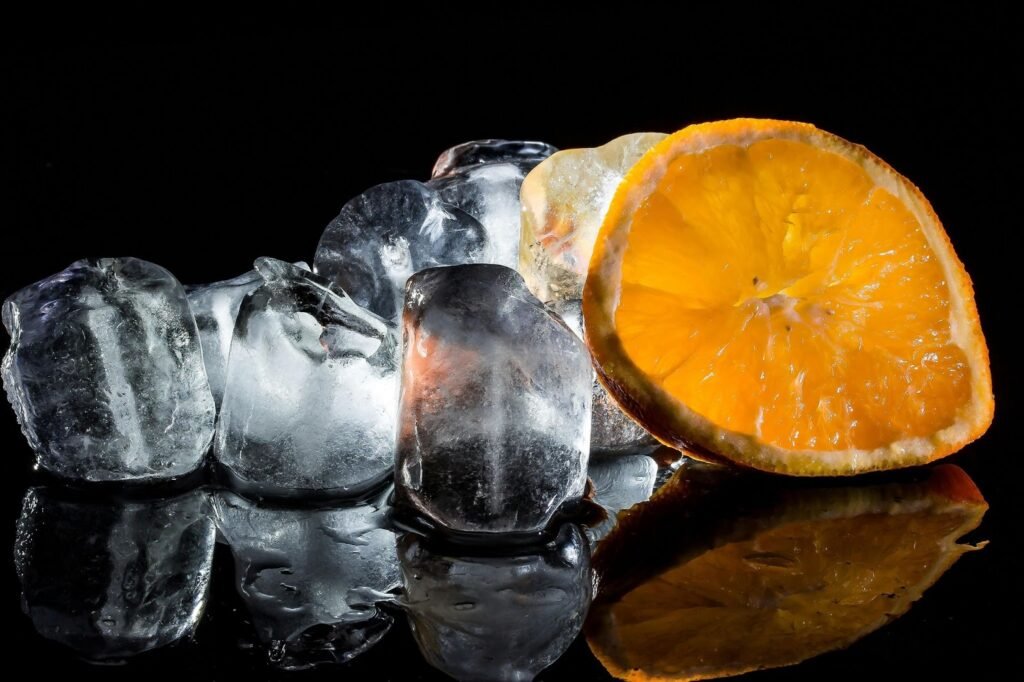Introduction
Ice chips, a peculiar meteorological occurrence, have long captivated the imaginations of scientists and the public alike. These small, irregularly shaped ice particles, often resembling tiny shards of glass, can be found in various atmospheric conditions. Their formation, characteristics, and potential impacts have been the subject of extensive research and study. In this article, we will delve into the fascinating world of ice chips, exploring their origins, properties, and significance.

What are Ice Chips?
Ice chips, also known as ice crystals or ice shards, are small, irregularly shaped pieces of ice that form in the atmosphere. They are distinct from snow or sleet, as they are generally smaller and more angular in appearance. Ice chips can be found in various atmospheric conditions, including clouds, fog, and precipitation.
Formation of Ice Chips
The formation of ice chips is a complex process influenced by several factors:
- Temperature: Ice chips typically form in environments where temperatures are below freezing.
- Humidity: The presence of sufficient moisture in the atmosphere is essential for the formation of ice crystals.
- Atmospheric conditions: Factors such as wind speed, atmospheric pressure, and cloud cover can influence the formation and distribution of ice chips.
Several mechanisms have been proposed for the formation of ice chips:
- Homogeneous nucleation: In this process, water molecules spontaneously freeze without the presence of preexisting ice particles. This is more likely to occur at very cold temperatures.
- Heterogeneous nucleation: This occurs when water molecules freeze around preexisting particles, such as dust, pollen, or sea salt.
- Ice multiplication: Once ice crystals form, they can act as nuclei for the growth of additional ice crystals, leading to a rapid increase in their numbers.
Characteristics of Ice Chips
Ice chips exhibit a variety of characteristics, including:
- Size: They can range from microscopic particles to larger pieces that can be seen with the naked eye.
- Shape: Ice chips are often irregularly shaped, with angular or jagged edges.
- Composition: They are primarily composed of frozen water, but may contain impurities such as dust or salt.
- Density: Ice chips are generally less dense than liquid water, allowing them to float in the atmosphere.
Impacts of Ice Chips
While ice chips are often considered harmless, they can have some potential impacts:
- Aircraft safety: Ice chips can pose a hazard to aircraft by striking the windshield or other parts of the plane. This can reduce visibility and potentially damage the aircraft.
- Ground hazards: Ice chips can accumulate on the ground, creating slippery conditions and increasing the risk of accidents.
- Environmental effects: Ice chips can affect the environment by altering cloud properties and precipitation patterns.
Ice Chips in Popular Culture
Ice chips have appeared in popular culture in various forms, including:
- Literature: Authors have used ice chips as a metaphor for coldness or detachment.
- Film and television: Ice chips have been featured in movies and TV shows, often as a symbol of danger or mystery.
- Art: Artists have created works inspired by the beauty and fragility of ice chips.
Recent Research and Discoveries
In recent years, researchers have made significant progress in understanding the formation, properties, and impacts of ice chips. Some of the latest findings include:
- New formation mechanisms: Scientists have identified additional mechanisms for the formation of ice chips, including through the collision of ice crystals in clouds.
- Impact on climate: Studies have shown that ice chips can play a role in climate change by influencing cloud properties and precipitation patterns.
- Applications: Researchers are exploring potential applications for ice chips, such as in
cloud seeding and materials science.
Frequently Asked Questions About Ice Chips
What are ice chips?
Ice chips are small, irregularly shaped pieces of ice that form in the atmosphere. They are distinct from snow or sleet, as they are generally smaller and more angular in appearance.
How are ice chips formed?
Ice chips form in cold, humid atmospheric conditions through various processes, including homogeneous nucleation, heterogeneous nucleation, and ice multiplication.
What are the characteristics of ice chips?
Ice chips can vary in size, shape, composition, and density. They are typically small, irregularly shaped, and composed primarily of frozen water.
What are the potential impacts of ice chips?
Ice chips can pose a hazard to aircraft by striking the windshield or other parts of the plane. They can also accumulate on the ground, creating slippery conditions. Additionally, ice chips can affect the environment by altering cloud properties and precipitation patterns.
What is the difference between ice chips and snow or sleet?
Ice chips are smaller and more angular than snow or sleet. Snowflakes are typically larger and more symmetrical, while sleet is composed of frozen raindrops.
Can ice chips be harmful to humans?
Ice chips themselves are generally not harmful to humans. However, they can create slippery conditions on the ground, increasing the risk of accidents.
Are there any practical applications for ice chips?
Researchers are exploring potential applications for ice chips, such as in cloud seeding and materials science.
Can I make ice chips at home?
Yes, you can make ice chips at home by freezing water in a shallow tray and breaking the resulting sheet of ice into small pieces.
Where can I find more information about ice chips?
You can find more information about ice chips in scientific journals, textbooks, and online resources.
What is the scientific term for ice chips?
Ice chips are also known as ice crystals or ice shards.
Are ice chips a recent phenomenon?
No, ice chips have been observed for centuries. However, our understanding of their formation and properties has improved significantly in recent years.
Conclusion
Ice chips are a fascinating and complex phenomenon that continues to captivate scientists and the public alike. Their formation, characteristics, and potential impacts are the subject of ongoing research. As our understanding of ice chips grows, we can better appreciate their role in the Earth’s atmosphere and explore their potential applications.
To read more, click here.





